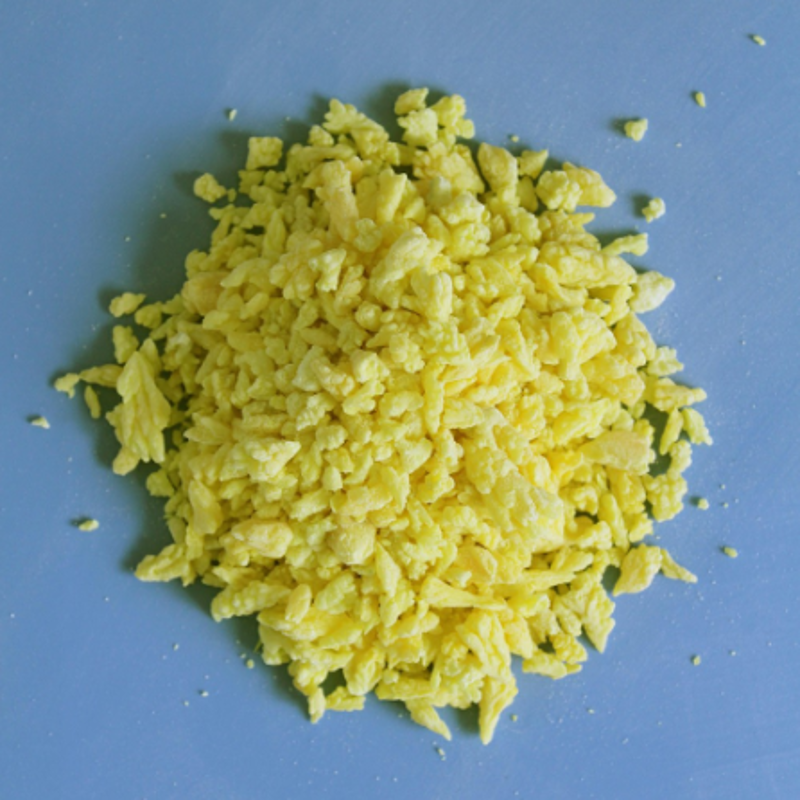-
Categories
-
Pharmaceutical Intermediates
-
Active Pharmaceutical Ingredients
-
Food Additives
- Industrial Coatings
- Agrochemicals
- Dyes and Pigments
- Surfactant
- Flavors and Fragrances
- Chemical Reagents
- Catalyst and Auxiliary
- Natural Products
- Inorganic Chemistry
-
Organic Chemistry
-
Biochemical Engineering
- Analytical Chemistry
-
Cosmetic Ingredient
- Water Treatment Chemical
-
Pharmaceutical Intermediates
Promotion
ECHEMI Mall
Wholesale
Weekly Price
Exhibition
News
-
Trade Service
On October 25, 2022, Dong Mengqiu's laboratory of Beijing Institute of Biological Sciences/Institute of Biomedical Sciences of Tsinghua University published an online report entitled Intestine-specific removal of DAF-2 nearly doubles lifespan in Caenorhabditis elegans with little fitness Cost's research paper [1].
The authors found that as long as the insulin signaling pathway activity is reduced in the intestinal tissue, the lifespan of nematodes can be nearly doubled, and the serious impact
on reproduction and development caused by reducing the insulin signaling pathway activity of all tissues in the body can be avoided.
The Insulin/IGF-1 signaling pathway (IIS or insulin signaling pathway) is the first discovered and widely validated aging regulatory signaling pathway [2].
Reducing insulin signaling pathway activity significantly extends lifespan in nematodes, fruit flies, and mice, and there is a strong link
between polymorphisms of the IIS gene in humans and longevity phenotypes.
Therefore, IIS regulation of aging has a high degree of evolutionary conservatism, and understanding how IIS affects nematode lifespan is of great value
for understanding aging regulation.
Using genome editing technology and fluorescent protein tags, the authors determined the spatiotemporal expression profiles of the upstream receptor tyrosine kinase DAF-2 and the downstream FOXO transcription factor DAF-16 of the nematode insulin signaling pathway, and then used auxin-induced protein degradation technology to resolve the contribution
of IIS in different tissues to life regulation.
The key findings reported in the paper (Figure 1) and implications for aging research are as follows
.
1) It was found that only reducing the activity of the IIS pathway in the intestine but not in other tissues can greatly extend the lifespan of nematodes; corrected the 22-year-old misconception that nerve cells are the hub of IIS lifespan [3-7]; It clarifies part of the reason for the deviation in the experimental results, that is, some neural "specific" promoters are not specific enough and have leakage expression
in intestinal cells.
2) It was found that the specific removal of insulin receptor protein in intestinal cells not only increased the lifespan of nematodes by 94%, which was close to the longevity of classical DAF-2 (E1370) mutants (106%), but also largely avoided the two major side effects
of development stunted and reduced egg production experienced by DAF-2 (E1370) nematodes.
This suggests that longevity does not have to come at the expense
of reproduction and development.
3) It was found that reducing the activity of the IIS pathway in intestinal cells leads to a decrease
in the anabolism of proteins and RNA in nematodes.
Several previous articles have reported that reduced protein anabolism is beneficial to longevity
.
Work published in Dong Mengqiu's lab in 2021 showed that daf-2 mutants inhibit protein synthesis by enhancing phosphorylation at the eIF2a S49 site, thereby achieving ~40% longer lifespan, and the remaining ~60% contributed by other mechanisms [8].
What previous studies have not sufficiently noticed is that daf-2 longevity mutants drastically reduce RNA synthesis and the decline in RNA anabolism favors longevity
.
4) Limiting insulin signaling pathway activity (of intestinal cells) and restricting diet are two of the most conservative and robust ways
to delay aging.
Past studies in the biology of aging have focused on their leading to similar downstream effects, such as decreased protein anabolism; This study suggests that they are likely to have a common origin—changes in nutrient supply or perception
.
Therefore, the findings in this paper help to focus on the increasingly divergent research on the regulatory mechanism of aging, suggesting that aging research should pay more attention to the role of
nutrition and metabolism in aging.
Figure 1.
Specifically reducing the activity of IIS in the gut can nearly double the lifespan of nematodes without affecting development and reproduction
.
In addition, this article answers a 29-year-old
question in the field of aging.
In 1993, Cynthia Kenyon discovered that mutations in the daf-2 gene double the lifespan of nematodes, which opened the prelude
to the study of the molecular regulation mechanism of aging.
However, it has not been clear
in which cells the DAF-2 gene is expressed.
The low expression of DAF-2 gene, the number of transcriptional starting points, the number of introns, the splicing isoforms, and the length of the coding region (50 kb) are not conducive to expression localization
.
In this paper, taking advantage of the fact that all mRNA isoforms of daf-2 share a 3' sequence, the SL2 trans splicing sequence and a tandem green fluorescent protein reporter (called Nuclear ultrabright GFP::mNeonGreen, or NuGFP)
carrying a dual nuclear localization signal are introduced at the 3' end by gene in situ editing.
NuGFP elements are co-transcribed with the tagged gene, and after trans-cleavage, independent labeled gene mRNA and NuGFP mRNA are generated, each of which is translated into protein without affecting
each other.
With the help of high-intensity NuGFP fluorescence signals aggregated into the nucleus, the authors found that daf-2 was widely expressed throughout the body by nematodes (Figure 2).
This method is versatile and can be used for endogenous expression localization of other nematode genes
.
Figure 2.
The DAF-2 gene is widely expressed
in nematodes.
Dr.
Yanping Zhang and Dr.
Wenhong Zhang from Mengqiu's lab are co-first authors
of this paper.
Researcher Dong Mengqiu is the corresponding author
of this paper.
Other authors include Dr.
Zhang Pan from the former Dong Mengqiu Laboratory, Professor Zhang Shaobing and PhD student Li Qi of Capital Normal University, Dr.
Cheng Zhan and Yue Sun from the Imaging Center of the Beijing Institute of Biological Sciences, and Dr.
Cai Tao and Dr.
Wang Jiawen from the Nucleic Acid Sequencing Center of the Beijing Institute of Biological Sciences.
The research work was funded by the Ministry of Science and Technology and the Beijing Municipal Science and Technology Commission and completed at the Beijing Institute of Life Sciences
.
References:
1.
Zhang, Y.
P.
, et al.
, Intestine-specific removal of DAF-2 nearly doubles lifespan in Caenorhabditis elegans with little fitness cost.
Nat Commun, 2022.
13(1): p.
6339.
2.
Kenyon, C.
J.
, The genetics of ageing.
Nature, 2010.
464(7288): p.
504-12.
3.
Wolkow, C.
A.
, et al.
, Regulation of C.
elegans life-span by insulinlike signaling in the nervous system.
Science, 2000.
290(5489): p.
147-50.
4.
Aghayeva, U.
, et al.
, DAF-16/FoxO and DAF-12/VDR control cellular plasticity both cell-autonomously and via interorgan signaling.
PLoS Biol, 2021.
19(4): p.
e3001204.
5.
Venz, R.
, et al.
, End-of-life targeted degradation of DAF-2 insulin/IGF-1 receptor promotes longevity free from growth-related pathologies.
Elife, 2021.
10.
6.
Uno, M.
, et al.
, Neuronal DAF-16-to-intestinal DAF-16 communication underlies organismal lifespan extension in C.
elegans.
iScience, 2021.
24(7): p.
102706.
7.
Roy, C.
, et al.
, DAF-2/insulin IGF-1 receptor regulates motility during aging by integrating opposite signaling from muscle and neuronal tissues.
Aging Cell, 2022: p.
e13660.
8.
Li, W.
J.
, et al.
, Insulin signaling regulates longevity through protein phosphorylation in Caenorhabditis elegans.
Nat Commun, 2021.
12(1): p.
4568.







